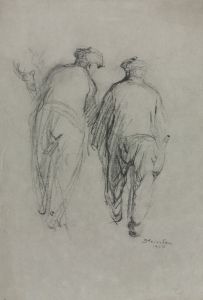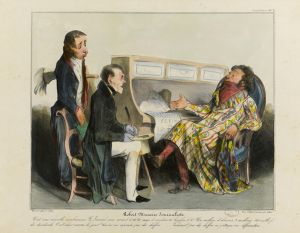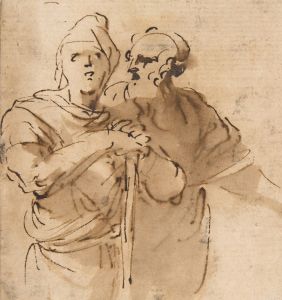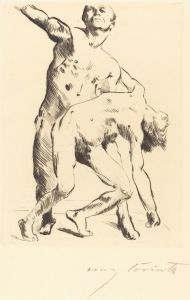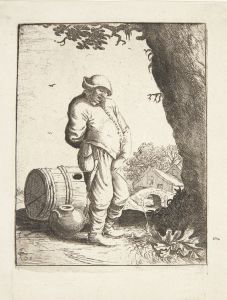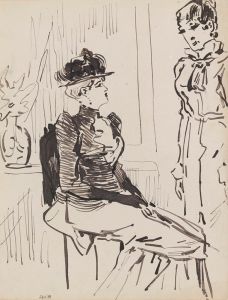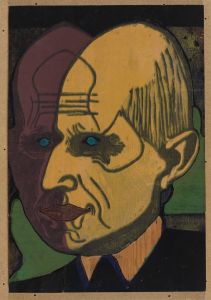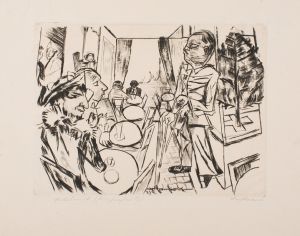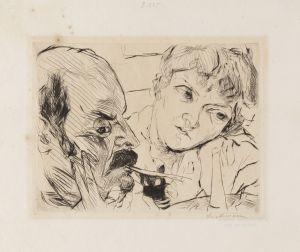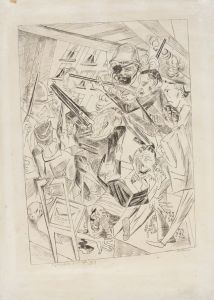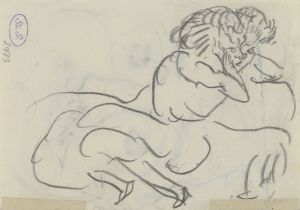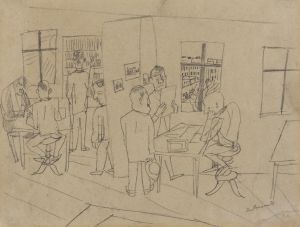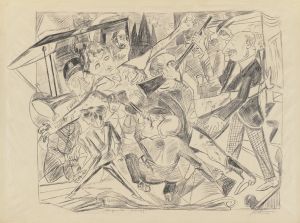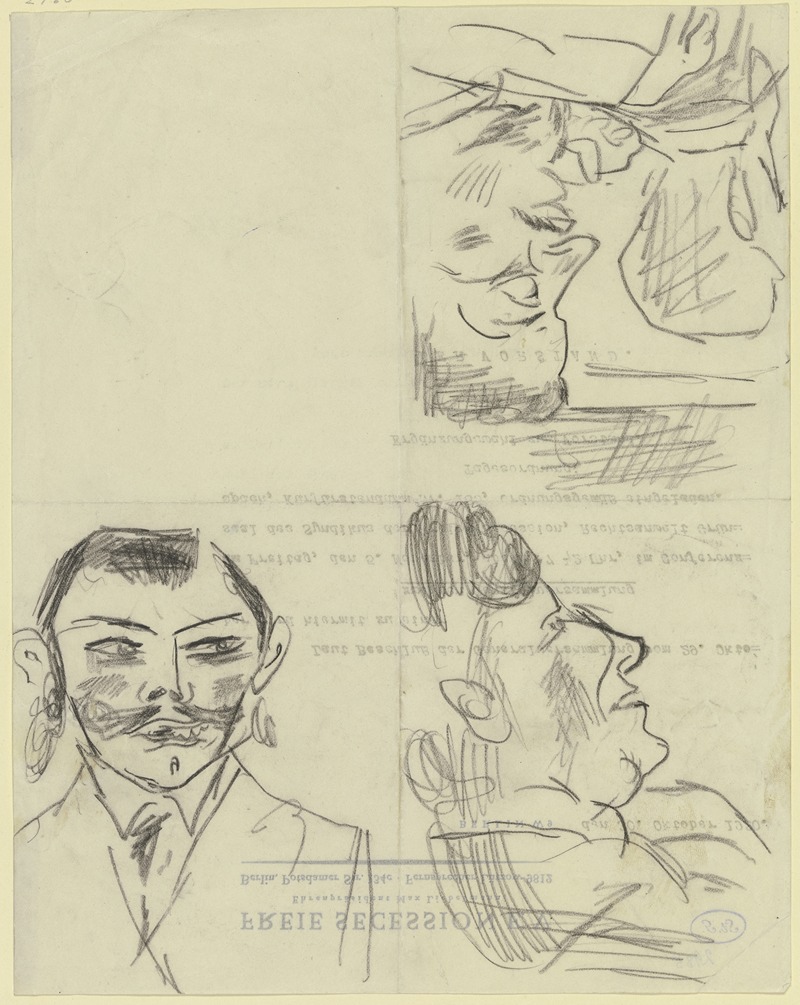
Drei Zeichnungen mit Männerköpfen
A hand-painted replica of Max Beckmann’s masterpiece Drei Zeichnungen mit Männerköpfen, meticulously crafted by professional artists to capture the true essence of the original. Each piece is created with museum-quality canvas and rare mineral pigments, carefully painted by experienced artists with delicate brushstrokes and rich, layered colors to perfectly recreate the texture of the original artwork. Unlike machine-printed reproductions, this hand-painted version brings the painting to life, infused with the artist’s emotions and skill in every stroke. Whether for personal collection or home decoration, it instantly elevates the artistic atmosphere of any space.
Max Beckmann, a prominent German painter and printmaker, is well-known for his contributions to the art world during the early to mid-20th century. One of his notable works is "Drei Zeichnungen mit Männerköpfen" (Three Drawings with Men's Heads). This piece exemplifies Beckmann's distinctive style, which often combines elements of Expressionism and New Objectivity, reflecting the tumultuous socio-political landscape of his time.
"Drei Zeichnungen mit Männerköpfen" is a drawing that showcases Beckmann's skill in capturing the human condition through portraiture. The work consists of three separate drawings, each depicting a man's head. These drawings are characterized by bold lines and a strong sense of individuality, which are hallmarks of Beckmann's approach to art. His ability to convey deep emotion and psychological complexity through facial expressions is evident in this piece.
Max Beckmann was born in Leipzig, Germany, in 1884 and studied at the Weimar Academy of Art. His early work was influenced by Impressionism, but he soon developed his unique style, which was heavily impacted by the experiences of World War I. Beckmann served as a medical orderly during the war, and the horrors he witnessed had a profound effect on his artistic vision. This experience is often reflected in the somber and introspective nature of his work.
Throughout his career, Beckmann's art was marked by a focus on the human figure, often exploring themes of existentialism and the human psyche. His portraits, including "Drei Zeichnungen mit Männerköpfen," are known for their intensity and depth. Beckmann's use of strong, angular lines and dramatic contrasts in light and shadow contribute to the emotional impact of his portraits.
In the 1920s, Beckmann became associated with the New Objectivity movement, which emerged in Germany as a reaction against the emotionalism of Expressionism. This movement emphasized a more realistic and detached approach to art, focusing on the objective representation of reality. Beckmann's work during this period often depicted scenes of urban life and the complexities of modern existence.
However, with the rise of the Nazi regime in Germany, Beckmann's art was labeled as "degenerate," and he was dismissed from his teaching position at the Städelschule in Frankfurt. In 1937, he fled to Amsterdam, where he continued to work in relative isolation. Despite the challenges he faced, Beckmann's art continued to evolve, and he remained committed to exploring the depths of human experience through his work.
"Drei Zeichnungen mit Männerköpfen" is a testament to Beckmann's enduring legacy as an artist who captured the complexities of the human spirit. His ability to convey profound emotion and psychological depth through his portraits has left a lasting impact on the art world. Beckmann's work continues to be celebrated for its powerful expression and its reflection of the historical and cultural context of his time.
Max Beckmann eventually emigrated to the United States in 1947, where he continued to create and teach until his death in 1950. His influence on modern art remains significant, and his works are held in high regard by art historians and collectors alike. "Drei Zeichnungen mit Männerköpfen" is just one example of Beckmann's remarkable ability to capture the essence of humanity through his art.





